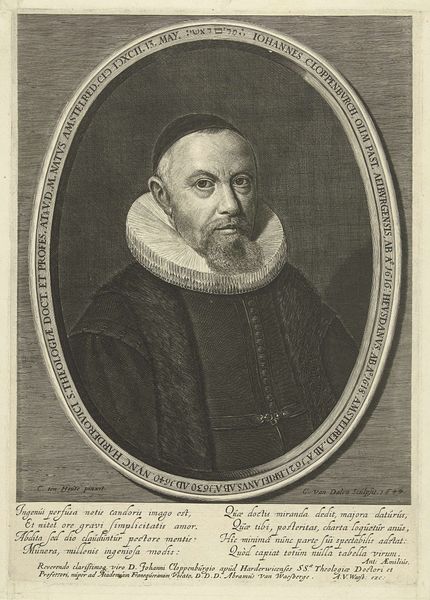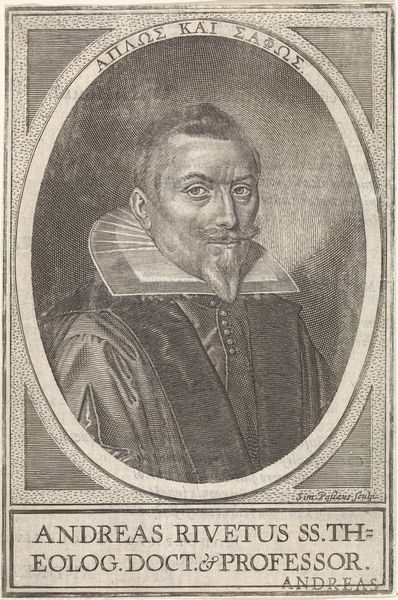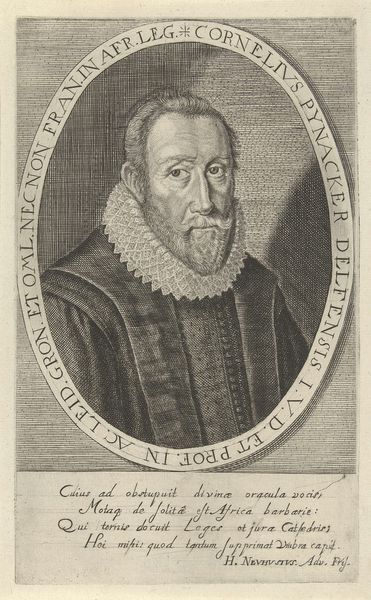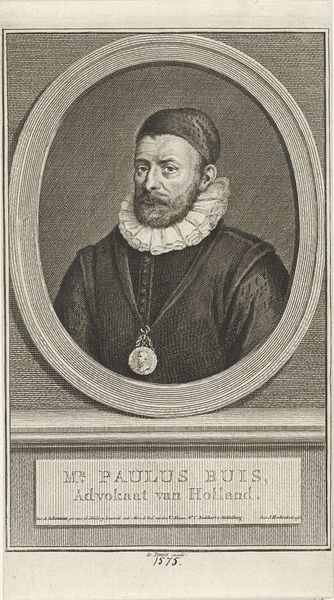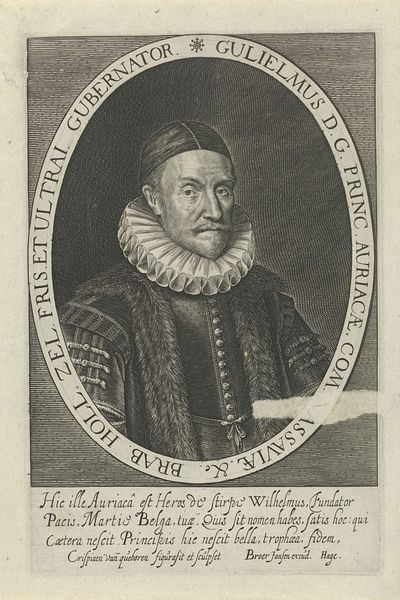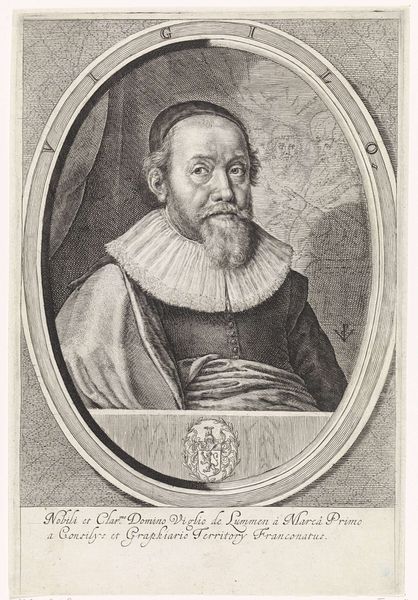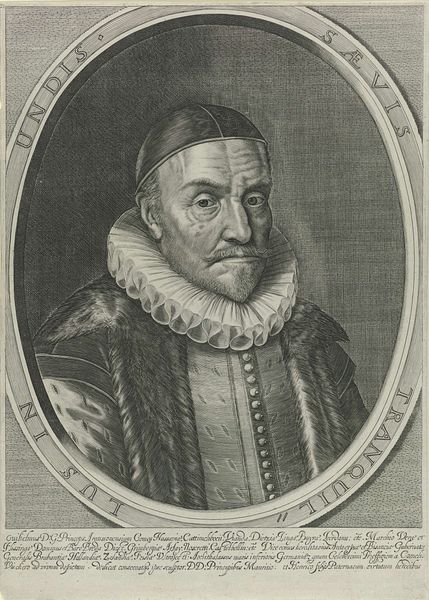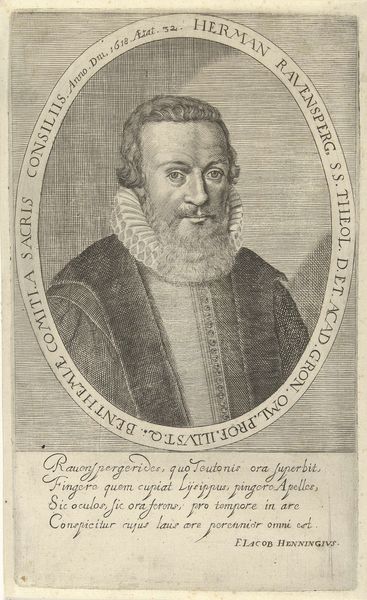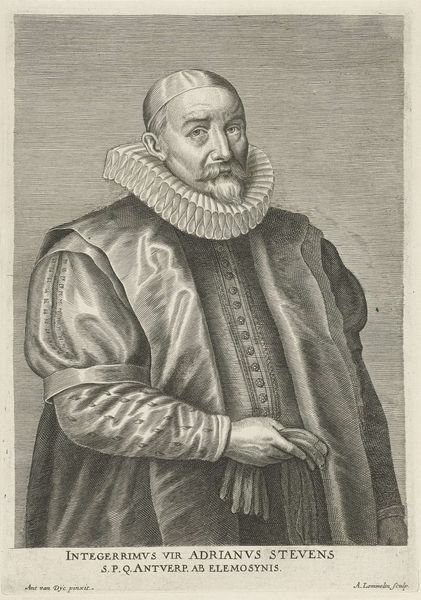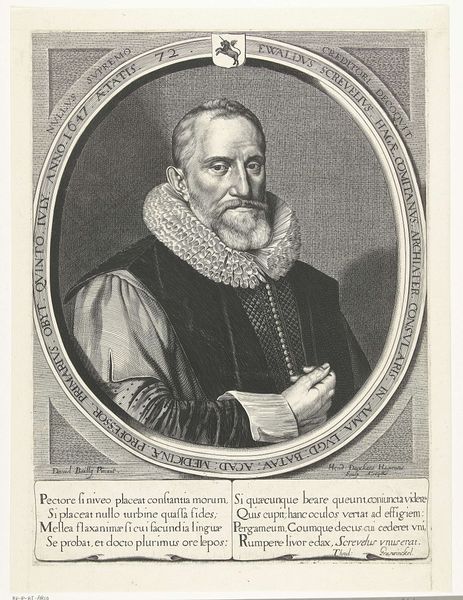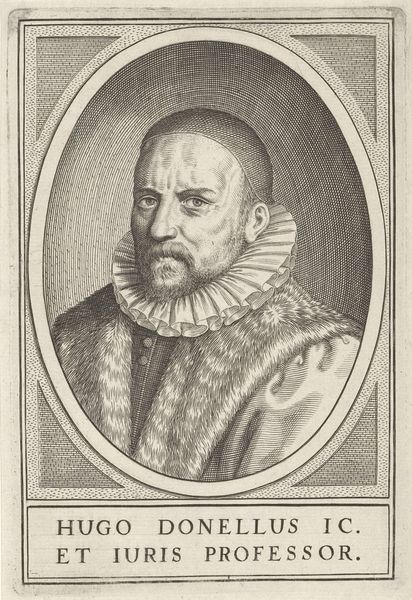
engraving
#
portrait
#
aged paper
#
baroque
#
old engraving style
#
portrait reference
#
portrait drawing
#
history-painting
#
engraving
Dimensions: height 153 mm, width 104 mm
Copyright: Rijks Museum: Open Domain
Editor: This is a portrait of Johannes Althusius by Crispijn van de Passe II, likely created sometime between 1604 and 1670. It's an engraving, so it’s rendered in incredibly fine lines. What's immediately striking is how meticulously detailed the ruff around his neck is, almost overwhelming the figure. How would you interpret this piece? Curator: Considering this portrait within its historical context reveals much. Althusius was a significant political thinker. Notice how the portrait presents him: framed by Latin text within the oval, a sign of erudition and importance. This wasn’t merely a depiction; it was a statement of status and intellect carefully crafted for a public audience. The very act of creating and distributing such a print amplified Althusius's ideas, engaging in the public sphere and cementing his legacy. Who do you think the audience for this work was? Editor: Perhaps other academics or members of the political class who would have recognized Althusius and his accomplishments. It’s interesting how the portrait isn’t just about him as an individual, but about the ideas he represented and how those ideas were being disseminated. Curator: Exactly! Engravings like this played a crucial role in circulating knowledge and shaping public opinion in the early modern period. Think about the power dynamics inherent in creating and consuming images – who controlled the narrative, and whose voices were amplified? Editor: It’s amazing to consider how even a seemingly simple portrait like this one was actually embedded within a much broader web of social and political forces. It certainly gives me a new perspective. Curator: It is also crucial to remember that the role of museums can significantly shape our perception of historical art by either upholding or changing historical socio-political ideas. Hopefully, this exploration prompts further investigation into these influential visual narratives.
Comments
No comments
Be the first to comment and join the conversation on the ultimate creative platform.
